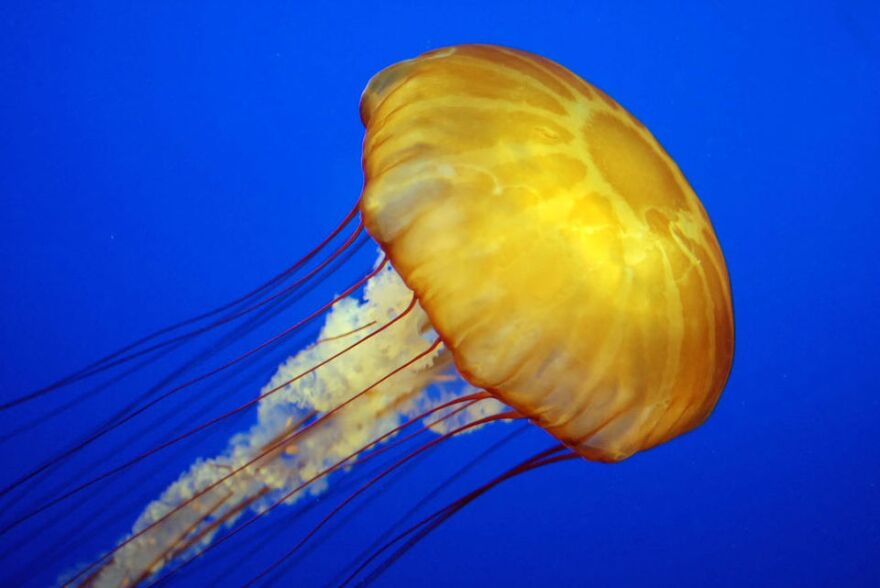Imagine you're a moon jellyfish for a second. Now imagine suddenly finding yourself missing one of your arms.
As a jellyfish missing an arm, what would you say is at the top of your list of concerns? You might be thinking that you would focus on growing back the arm you just lost, knowing that jellyfish can regenerate their limbs.
This is what scientists thought at first, too. A lot of marine animals can regenerate tissue quickly after an injury, and researchers wanted to find out whether moon jellyfish self-repaired the same way. Turns out, moon jellyfish have a different priority: symmetry.
In a study, scientists anesthetized juvenile moon jellyfish and amputated one to six of the jellyfish's usual eight arms. Instead of growing the lost arms back, the moon jellyfish rearranged their remaining arms to maintain the radial symmetry of their bodies.
This is about more than just aesthetics. Jellyfish need to be symmetrical to both move and eat. Jellyfish flap their arms to propel themselves through water, and that propelling motion is also how they move food past and into their mouths.
Big, uneven gaps between arms, or having a few arms clustered on one part of the body, and none on the other, makes those movements a lot more difficult. Imagine trying to move around with all your arms and legs sticking out of your head.
D: Yaël, I'd like you to imagine you're a moon jellyfish for a second.
Y: Okay...
D: Now imagine suddenly finding yourself missing one of your arms.
Y: Where is this going, Don?
D: Just stay with me for a second. As a jellyfish missing an arm, what would you say is at the top of your list of concerns?
Y: Well, knowing that jellyfish can regenerate their limbs, I'd guess probably growing back the arm I just lost, right?
D: That's what scientists thought at first, too. A lot of marine animals can regenerate tissue quickly after an injury, and researchers wanted to find out whether moon jellyfish self‑repaired the same way. Turns out, moon jellyfish have a different priority.
Y: What is it?
D: Symmetry. In a study, scientists anesthetized juvenile moon jellyfish and amputated one to six of the jellyfish's usual eight arms. Instead of growing the lost arms back, the moon jellyfish rearranged their remaining arms to maintain the radial symmetry of their bodies.
Y: I'm guessing this is about more than just aesthetics. Jellyfish need to be symmetrical to move, right?
D: And eat. Jellyfish flap their arms to propel themselves through water, and that propelling motion is also how they move food past and into their mouths. Big, uneven gaps between arms, or having a few arms clustered on one part of the body, and none on the other, makes those movements a lot more difficult. Imagine trying to move around with all your arms and legs sticking out of your head.
Y: I imagine it wouldn't be easy.



